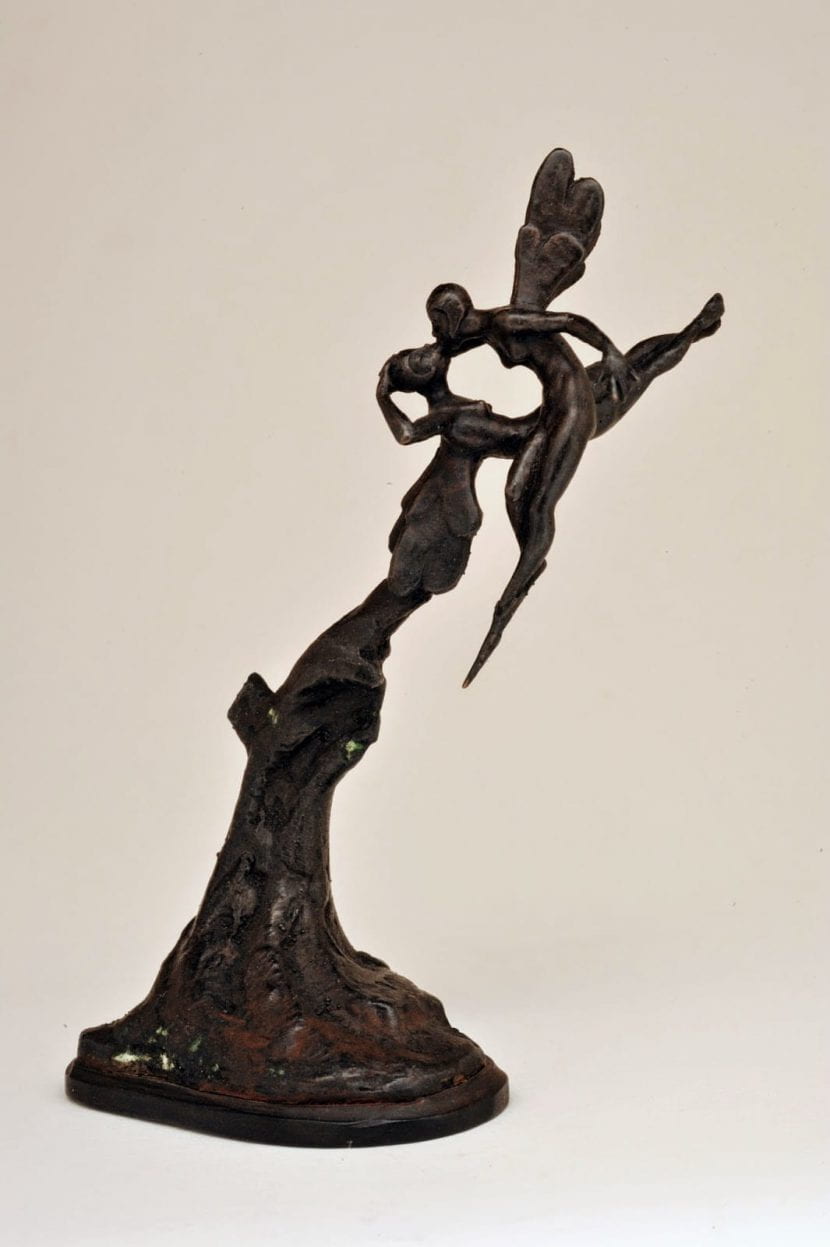The collection housed in the Archives & Special Collections of Albert S. Cook Library at Towson University consists of twenty-four bronze miniature sculptures ranging between one to four inches in height, bronzes, bas-reliefs, and medallions. The themes of the sculptures are historical, mythological, biblical, satirical, and whimsical in nature.
Rosenthal studied in the Yeshiva until he was old enough to enter his father’s milling business, but his artistic interests never faded. When he was 17 years old, Rosenthal received the attention of a teacher in a Viennese school of painting, who urged him to go to Berlin to get artistic training, where he stayed for several months. Then at the age of 19, and after the passing of his father, Rosenthal immigrated to the United States.
After a short stay in Birdsnest, Virginia, he left for Baltimore, Maryland, where he was introduced to Ephraim Keyser, the head of the Rinehart School of Sculpture (now known as the Maryland Institute College of Art, MICA). He received a four year scholarship to the school, and during this time he won several prizes and began receiving recognition as a young talented sculptor.
After graduating from MICA, Rosenthal worked for jewelers and dental offices, working with settings and inlays, and around 1918 he started working with miniature sculptures when he was designing a bronze ring commissioned by opera singer, Enrico Caruso. After finishing this piece, Rosenthal worked on developing a method of casting tiny figures from wax into bronze himself as no foundry in the world could manage to work with figures so small. Between 1918 and 1924, he developed a process to do so, and sources say that in his excitement to rush home and tell his wife about it, he managed to destroy his newly created cast and lost the solution he had worked so hard to develop. It took him three months to rediscover it.
To make his miniature sculptures, Rosenthal started by carving the model out of black wax with a simple pearl-handled penknife, and he was known for not using a magnifying glass when working with the sculptures, which is quite a task given the accurate detail of his creations. The casting was done using the lost-wax casting process, which involves coating the sculpted wax with a special solution and then evaporating the wax figure to create a mold which can then be used to create the sculpture. Below is a video from the National Sculpture Society explaining the lost-wax casting process.
His first success came about in 1925 with an exhibit held in a Fifth Avenue gallery in New York City, in which almost all of his 40 miniature sculptures were sold and an ensuing article was published in the New York Times. As the story goes, Rosenthal did not know about the success of his show until he saw his name in the newspaper. He did not have enough money to purchase the newspaper so he ran 38 blocks to the reading room of the New York Public Library to read the art critic’s review praising his work. Thereafter, museums and galleries in New York, Washington D.C., London, and Jerusalem exhibited his artwork, and his sculptures are now part of museum collections including the Smithsonian, the Jewish Museums of New York and Maryland, and the Louis Rosenthal Museum.
Besides exhibits of his work, Rosenthal also received notable commissions over the course of his artistic career. One of those commissions was for a memorial plaque for the late Governor Albert C. Ritchie in the summer of 1937, and other commissioned artworks included, “The Dawn of Maryland Freedom” and a gift to Lord Balfour, Prime Minister of England. The Royal Society of Miniature Painters, Sculptors and Gravers were so impressed by his work that they extended an invitation for him to join the society. Louis Rosenthal died in John Hopkins Hospital, Baltimore, Md., in 1964 due to a heart attack.
With a lively imagination and vast knowledge of history and mythology, Rosenthal drew on stories and characters from mythology, folklore, the Old Testament, and everyday life for the subjects of his sculptures.The intricate details of his miniature sculptures are astonishing, and every piece reflected his passion, dedication, and extraordinary skill. As many other talented individuals blessed with the gift to create, he was consumed by his craft and always willing to converse with friends and other artists about his work. As his son, Bernard Rosenthal would recall, “On the street my father was always talking to someone, meeting friends everywhere. He would pull a miniature from his pocket and talk about mythology or stories from the Bible, or whatever he was trying to express in the work. His friends would smile at me and say, did you know that your father was an artist who carries a museum in his pocket?” (The Louis Rosenthal Museum. Web. 18 Sept. 2014.)
